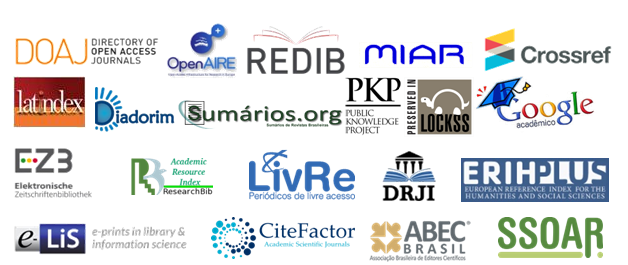A A simple wireless long-range data acqusition system using xbee radio modules, the Arduino platform and the NI-Labview development environment.
DOI:
https://doi.org/10.20873/uft.2359-3652.2018v5nEspecialp87Abstract
The construction and testing of prototypes of data acquisition systems employing radio waves, developed in 2016 as part of the Scientific Initiation Program of the Federal University of Tocantins (PIBIC), is being carried out
with the work plan entitled: Construction of a system of data acquisition with communication via radio waves using Xbee modules, the Zigbee standard, the Arduino prototyping platform and Labview. The built-in systems include: sensor modules, Xbee-type radio modules, the Arduino electronic prototyping platform and the Labview systems development environment. The goal is to take advantage of the new long-range communication capabilities of Digi International's low-power form factor radio modules along with its compatibility with the Arduino series of microcontroller-based PCB family of printed circuit boards, Raspberry and others, as well as shields and sensor modules, for the construction of wireless data acquisition systems. The prototypes are formed by two subsystems: In the first, sensor modules collect analogical electrical information from physical quantities being analyzed and send the data to an Arduino Uno card that transforms the analog signals into digital ones and then uses an Xbee module to propagate the information through broadcasting. The second subsystem consists of another Xbee module connected to a microcomputer via the USB interface which is in communication with an application in Labview, this subsystem receives the signal being broadcast by the first module. The application in Labview controls the process of acquiring and broadcasting the information as well as recording the numerical data and its graphical presentation on a computer display. The built-in systems allow you to transmit and receive scientific data by communicating through radio waves between two distant locations, in real time, and accurately. The prototypes can be easily constructed and modified to be introduced as a reliable tool of data acquisition in any scientific laboratory.
Keywords:Instrumentation, Arduino, Xbee.
References
MEASUREMENT COMPUTING CORPORATION. Data acquisition handbook. 3thed., MCCDAQ 133 p., 2012.
MAINAK CHOWDHURY, ARUMITA BISWAS. Wireless Communication.Theory and Applications.Cambridge University Press, 568 p. 2017.
JONATHAN A TITUS. The Hands-on XBEE Lab Manual: Experiments that Teach you XBEE Wirelesss Communications. 1st edition, Newnes, 324 p. 2012.
MASSIMO BANZI. Getting Started with Arduino.2nd editions, O’reilly 118 p. 2011.
NATIONAL INSTRUMENTS CORPORATION. Getting Started with LabVIEW.Worldwide Technical Support and Product Information, Nov. 2001 edition, 47 p. 2001.
JEFFREY TRAVIS, JIM KRING.LabVIEW for Everyone: Graphical Programming Made Easy and Fun. 3thEdition, U.S.A., Prentice Hall; 2006.
TEXAS INSTRUMENTS.LM35 Precision Centigrade Temperature Sensors. Datasheet, U.S.A. 2016.
NATIONAL INSTRUMENTS GLOBAL.LabVIEW Interface for Arduino (LIFA) Toolkit Overview. Free internet video resource tutorial available at internet address: https://www.youtube.com/watch?v=n3AwL-_UCS4.Acesso em 15/04/2017.
Downloads
Published
How to Cite
Issue
Section
License
Autores que publicam nesta revista concordam com os seguintes termos:
1. Autores mantém os direitos autorais e concedem à revista o direito de primeira publicação, com o trabalho simultaneamente licenciado sob a Creative Commons Attribution License (CC BY-NC 4.0), permitindo o compartilhamento do trabalho com reconhecimento da autoria do trabalho e publicação inicial nesta revista.
2. Autores têm autorização para assumir contratos adicionais separadamente, para distribuição não-exclusiva da versão do trabalho publicada nesta revista (ex.: publicar em repositório institucional ou como capítulo de livro), com reconhecimento de autoria e publicação inicial nesta revista.
3. Autores têm permissão e são estimulados a publicar e distribuir seu trabalho online (ex.: em repositórios institucionais ou na sua página pessoal) a qualquer ponto posterior ao processo editorial.
4. Além disso, o AUTOR é informado e consente com a revista que, portanto, seu artigo pode ser incorporado pela DESAFIOS em bases e sistemas de informação científica existentes (indexadores e bancos de dados atuais) ou a existir no futuro (indexadores e bancos de dados futuros), nas condições definidas por este último em todos os momentos, que envolverá, pelo menos, a possibilidade de que os titulares desses bancos de dados possam executar as seguintes ações sobre o artigo:
a. Reproduzir, transmitir e distribuir o artigo, no todo ou em parte sob qualquer forma ou meio de transmissão eletrônica existente ou desenvolvida no futuro, incluindo a transmissão eletrônica para fins de pesquisa, visualização e impressão;
b. Reproduzir e distribuir, no todo ou em parte, o artigo na impressão.
c. Capacidade de traduzir certas partes do artigo.
d. Extrair figuras, tabelas, ilustrações e outros objetos gráficos e capturar metadados, legendas e artigo relacionado para fins de pesquisa, visualização e impressão.
e. Transmissão, distribuição e reprodução por agentes ou autorizada pelos proprietários de distribuidoras de bases de dados.
f. A preparação de citações bibliográficas, sumários e índices e referências de captura relacionados de partes selecionadas do artigo.
g. Digitalizar e / ou armazenar imagens e texto de artigo eletrônico.

